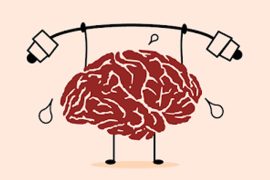Pressure training, often referred to as “pressure testing” or “stress inoculation,” is a method used in various competitive fields to simulate high-pressure situations and enhance an individual’s ability to perform under stress. While the term can be applied to different contexts, such as military training or sports, the concept generally involves exposing individuals to controlled and intense stressors, allowing them to develop skills and strategies for effective performance when the stakes are high.
In the fitness domain, pressure training has emerged as an innovative method for enhancing strength and endurance beyond traditional weightlifting routines. This approach introduces a distinctive set of challenges aimed at pushing individuals to their limits and achieving peak performance.
Pressure training, as defined by Maithili Bhuptani, a lead sports and exercise psychologist at Reliance Foundation, involves strategically increasing pressure during off-season or training sessions. Sports psychologists utilize pressure training to mentally prepare athletes, helping them develop coping mechanisms and improve their performance under high-stakes situations.
While research supports the significant benefits of pressure training on performance, implementing this approach requires careful consideration. Coaches and practitioners must strike a balance, creating enough pressure during training to simulate competition scenarios without overwhelming athletes. The challenge lies in finding the optimal level of pressure that challenges individuals to excel without negatively impacting their mental and physical well-being.
Who, what, when, and why are Pressure training basics:
Who: Which Athletes to Train Under Pressure
Pressure training (PT) can benefit a diverse range of trainees. It is not limited to beginners or elite athletes but can be applied to individuals across different skill levels. Even highly skilled athletes can enhance their ability to cope with pressure through this training approach.
What: Creating Pressure, Not Difficulty
It’s crucial to distinguish between the difficulty of a task and the pressure associated with it. While a task may be challenging, the pressure is about the increased importance of performing well. Therefore, in pressure training, the emphasis should be on creating an environment that simulates the pressure athletes experience in competitive situations, rather than merely increasing the difficulty of tasks.
When to Conduct PT: Frequency and Timing
The optimal frequency of pressure training may vary based on the specific context. Coaches and practitioners need to consider factors such as the overall training hours dedicated by athletes and the time available for preparing for pressure in addition to training other essential skills and tactics. The timing of pressure training sessions should be strategic to align with the athletes’ overall training regimen.
Why Conduct PT: Understanding the Intervention
The primary goal of pressure training is to enhance individuals’ ability to perform under high-stakes situations. By strategically introducing pressure during training sessions, athletes develop coping mechanisms, mental resilience, and improved performance in competitive scenarios. The intervention aims to bridge the gap between training environments and real-world competitive conditions.
Pressure training is a versatile approach that can benefit athletes across skill levels. It involves creating an environment that simulates the pressure of competition, not just increasing task difficulty. The frequency and timing of pressure training sessions should be tailored to the specific context and individual needs. Ultimately, the goal is to prepare athletes mentally and physically to excel under pressure and optimize their performance in competitive situations.
Some ways you can pressure train:
Pressure training involves creating situations that mimic the stress and intensity of real-world competition, challenging individuals to perform under pressure. Here are some ways to incorporate pressure training into various contexts:
- Simulated Game Scenarios: In sports, simulate game situations during practice sessions. This could involve recreating critical moments, high-pressure plays, or specific game scenarios to prepare athletes for the stress of competition.
- Time Constraints: Introduce time constraints to tasks and exercises. This adds a sense of urgency and replicates situations where individuals must perform within a limited timeframe, such as in timed competitions or high-pressure work environments.
- Consequence Drills: Implement consequence-based drills where there are tangible outcomes for success or failure. This could include rewards for successful performance or additional challenges for less successful attempts, adding a layer of pressure.
- Performance Reviews: Conduct performance reviews or evaluations during training sessions. Knowing that their performance is being assessed can create a sense of pressure, mimicking the scrutiny individuals may face in competitive situations.
- Crowd or Peer Observation: Have athletes or individuals perform in front of an audience or peers. The presence of spectators, even if they are fellow teammates, can create a heightened sense of pressure and scrutiny.
- Communication Challenges: Introduce communication challenges during team activities. This can include limiting verbal communication, altering team dynamics, or creating situations where effective communication is crucial, adding a layer of pressure to the task.
- Changing Environments: Introduce unexpected changes to the training environment. This could involve altering the playing surface, changing equipment, or adjusting lighting conditions. Adapting to unexpected changes helps individuals develop resilience under pressure.
- Pressure-Inducing Tools: Use tools like scoreboards, timers, or pressure gauges during training. These tools provide visible indicators of performance, creating a sense of pressure as individuals strive to meet specific benchmarks or deadlines.
- Simulated Stressors: Introduce simulated stressors that mimic external pressures individuals may face. This could include noise, distractions, or even simulated setbacks, challenging individuals to maintain focus and composure.
- Decision-Making Challenges: Create scenarios that require quick and effective decision-making. This is particularly relevant in sports, business, and other competitive fields where individuals must make critical decisions under pressure.
It’s crucial to implement pressure training in a controlled and ethical manner, ensuring that the stressors introduced are manageable and contribute to skill development rather than causing undue stress or anxiety. Additionally, debriefing sessions and support mechanisms should be in place to help individuals process their experiences and learn from the pressure training exercises.
Disclaimer:
The information contained in this article is for educational and informational purposes only and is not intended as a health advice. We would ask you to consult a qualified professional or medical expert to gain additional knowledge before you choose to consume any product or perform any exercise.








